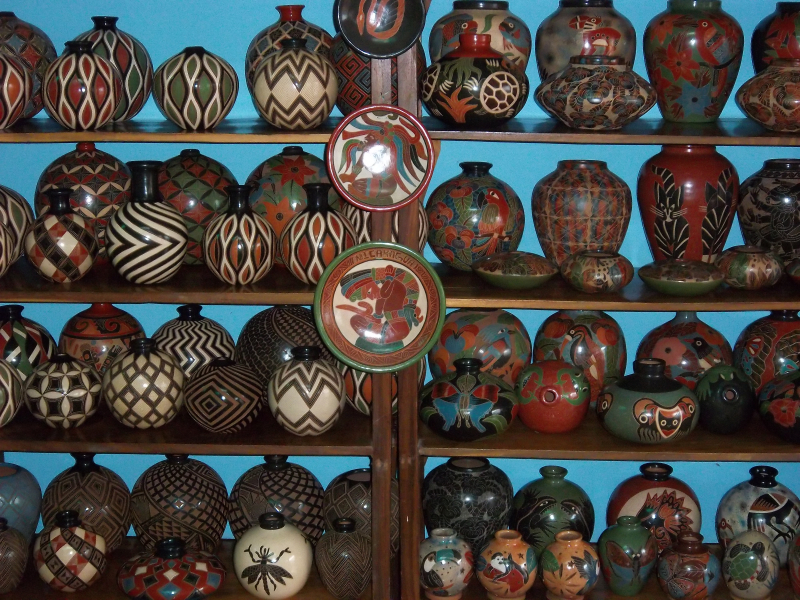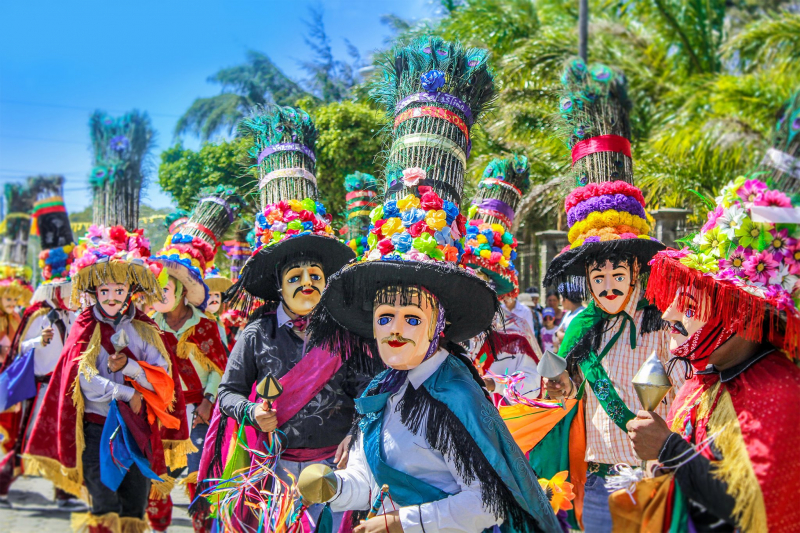The Arts and Humanities
Since the early 1980s, the Ministry of Culture has worked to preserve folk art and train a new generation of artisans in order to prevent the extinction of traditional crafts. Until the Sandinistas launched their literacy campaign in the 1980s, half of Nicaragua's population was functionally illiterate. Nicaraguans continue to produce utilitarian and decorative ceramics and earthenware. The shapes and motifs found in pre-Columbian pieces are still used in locally crafted earthenware. Silverwork, woodcarving, embroidery, and sculpting are some of the other local crafts. On the Atlantic coast, gold filigree is practiced.
The performing arts One of Nicaragua's most enduring pre-Colonial art forms is folkloric dance. Traditional dances are performed at festivals and fiestas, and children learn about their culture through after-school programs. Nicaraguan dance tradition includes the palo volador, or flying pole, which is similar to folk dances in Mexico and Guatemala in that a performer is strapped to a rope wound around a pole and then unwinds, swinging farther into the air accompanied by the pounding rhythm of percussion instruments. The marimba, a type of xylophone, is another instrument in Nicaragua's rich musical tradition. Masaga serves as the country's primary performing arts center.
Dances such as Las Inditas, Los Diabilitos, and Las Negras all involve masked characters. Another traditional dance theme is the re-enactment of the Spanish Conquest, parodying the conquerors by depicting them in pink masks with grotesque facial features. The farcical dance portrays the Spaniards and their conquest as clumsy, but inevitably triumphant.








